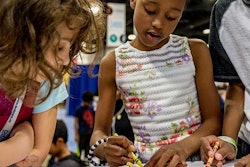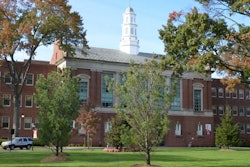I write with kudos to the Georgetown Center on Education and the Workforce, or GCEW, for its recent publication simply titled STEM. Beyond just another depiction of why we need more STEM graduates to strengthen our workforce (although the authors do a stellar job at breaking down this argument), the authors do something more. The report gets into the tricky territory of defining just why STEM literacy is important both inside and outside STEM fields and sheds light on how those who seek to enter STEM fields — as well as those who are successful in doing so — eventually divert from the STEM pathway.
In the report, GCEW Director Anthony Carnevale and his team used data from the Occupational Information Network (O*NET), a resource center sponsored by the Department of Labor/Employment and Training Administration that houses detailed information on more than 965 occupations (STEM and non-STEM), including those cognitive and non-cognitive competencies that workers in said occupations are meant to hold. The researchers then cross-walked this information with occupational data from the Current Population Survey by the Department of Census — thus yielding a rich set of data from which to draw out skills inherent to the STEM jobs that our nation’s public and private sectors claim again and again are in high demand.
One can readily see how training in STEM aligns with other abilities that also are in demand in and out of STEM jobs — abilities like deductive reasoning, mathematical reasoning and problem sensitivity — those “problem solving” and “analytical skills” that employers are increasingly criticizing our nation’s higher education system for not providing its graduates. The STEM authors also point to the non-cognitive competencies associated with STEM occupations, including realistic and investigative “work interests” and the STEM work values of achievement, independence and recognition.
This brings us to another potent argument for more STEM degrees — the need for those cognitive abilities and non-cognitive interests and values that STEM education and careers provide. And it reveals a much needed intersection between STEM and non-STEM departments when it comes to educating future STEM and non-STEM graduates alike.
Regardless of whether or not one chooses to major in STEM, given the demand for STEM-like skills, it is more important than ever for all students at a given college or university to take coursework in STEM — whether they be strict math and science courses or interdisciplinary approaches like those that take on issues of environmental sustainability, global food and health, ethics and energy.
But just how do campuses successfully integrate STEM and non-STEM coursework for enrollment across majors? And just as important, how do departments assess learning in these courses? That is, are students actually becoming more STEM literate as a result and will graduates thus satisfy the needs of future employers? Not easy questions to answer, but questions that need to be addressed nonetheless.
Groups with longstanding expertise in both learning and assessment are taking on this charge, including the American Association of Colleges and Universities. Their Project Kaleidoscope, or PKal, has taken on the issue of interdisciplinary learning via its What Works in Facilitating Interdisciplinary Learning in Science and Mathematics initiative (see the corresponding report here). PKal uses higher education scholarship and interdisciplinary program models via collaboration with education scholars (such as Drs. Adrianna Kezar and Jaime Lester), evaluators and practitioners. The interdisciplinary nature of such programs taps into the excitement and interest of students who have the interest and skills to enter a STEM major but also have a humanitarian or social science bent.
Yet, as the GCEW report points out, individuals — including women and racial/ethnic minorities, who also are the most underrepresented in STEM — select majors and careers based on a number of factors, including those not related to inherent interest or talent in STEM.
The report touches on what the authors call “diversion” from STEM, or the movement of STEM students, graduates and professionals into non-STEM majors and careers. Such diversion is especially salient for women: For every 100 women who enter postsecondary education, 8 percent do so with an interest in STEM; 3 percent graduate with a STEM degree; and 1 percent remains in the STEM workforce through their early career years.
While these and other disparities exist, the numbers of STEM graduates themselves are very small — thus, the national shortage of STEM talent. All of which promotes efforts to not only interest and excite youth and adults about STEM careers but also ensure that such careers are meeting their intellectual expectations; social, personal and economic needs; and are ultimately fulfilling their lives in a number of other ways.
Beyond STEM jobs, it is of further importance that all students are STEM literate and thus able to meet the demands of employers and society at large regardless of their traditional college major. Hence the need for multidisciplinary approaches and avenues to explore STEM beyond traditional pathways.
If we are to truly meet the needs of an increasingly scientific society, of course we need more STEM graduates. But we also need more STEM-literate students, regardless of college major.
This two-pronged approach must be addressed by education and industry advocates in the context of federal, state, and regional policy with linkages throughout the education and career continuum.
Given the national and international exposure and use of Carnevale’s data, the GCEW STEM piece is a welcome addition to a growing number of reports aimed at turning the tide of STEM education at large. This endurance of information, if used correctly, will spark new questions and dialogue about just how we should approach and carry out efforts to retain students and professionals in STEM and ensure a scientifically literate population.
Dr. Lorelle L. Espinosa is the director of policy and strategic initiatives at the Institute for Higher Education Policy, a Washington, D.C.-based nonpartisan, nonprofit organization committed to promoting access to and success in higher education for all students.



















